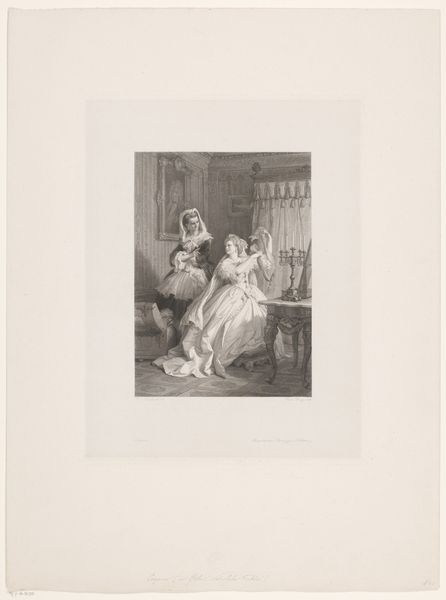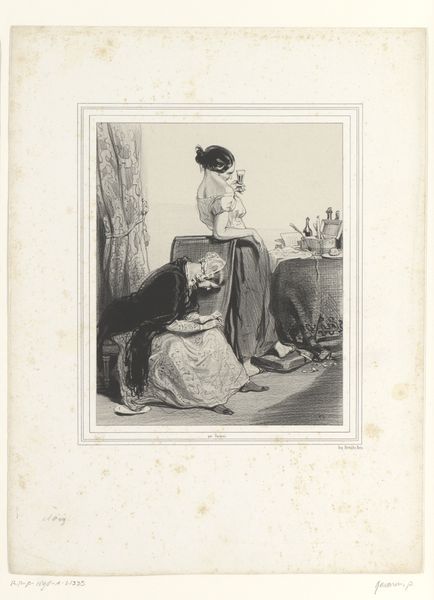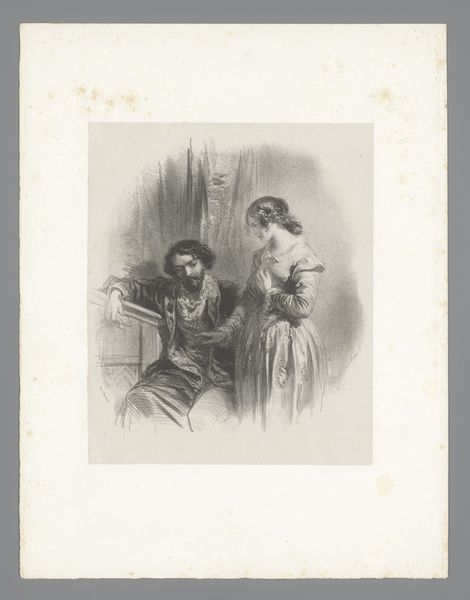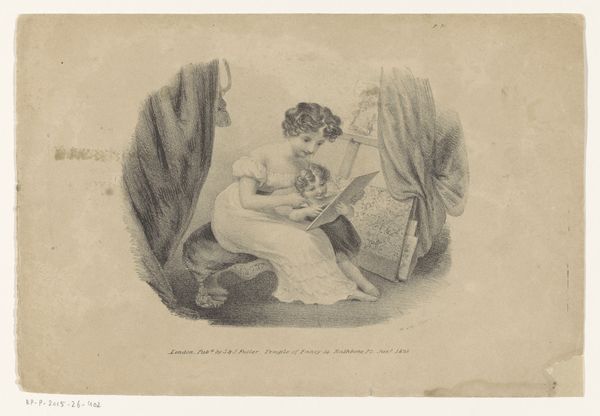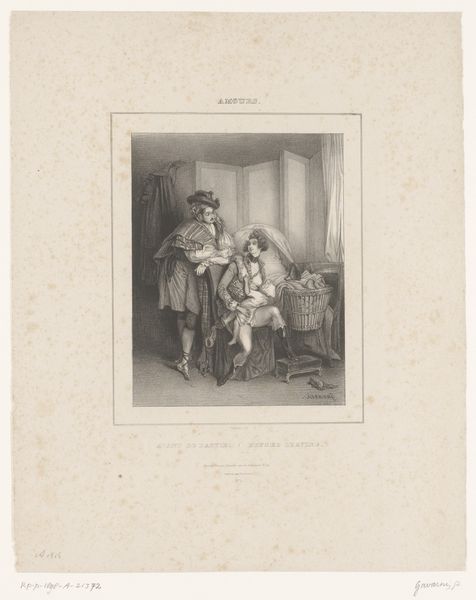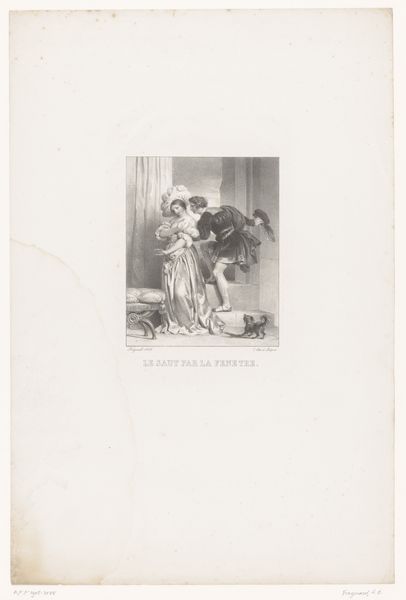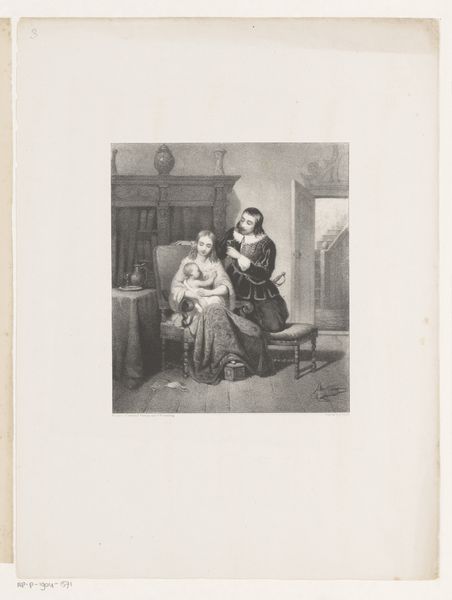
print, etching, paper, engraving
#
portrait
#
16_19th-century
# print
#
etching
#
paper
#
genre-painting
#
engraving
#
realism
Dimensions: height 470 mm, width 314 mm
Copyright: Rijks Museum: Open Domain
Editor: Here we have an etching and engraving printed on paper, titled "Interior with a Family Looking at a Print Album." It's attributed to an anonymous artist and is thought to be from somewhere between 1834 and 1866. It gives off a rather intimate, domestic feel. What strikes you about it? Curator: I'm drawn to the material conditions that make this image possible. Look at the paper itself – likely mass-produced, making art accessible. The printmaking process, etching and engraving, multiplies the image. Consider how that impacted the consumption of art at the time. Editor: That's interesting. So, beyond the scene itself, you're looking at the print as a product of its time? Curator: Precisely. The scene depicts bourgeois leisure, but the image's *own* distribution reflects a shift in how art functions within that society. We can talk about genre painting and family portraits, but this object reflects expanding capitalist networks. Were images like this driving desire and consumerism, for instance? The details are luxurious but achieved through labor and materiality accessible to broader markets than unique oil paintings. Editor: I see what you mean. The availability of the image through these mediums challenges the exclusivity traditionally associated with art, it changes art's relationship to labor and to consumption. I hadn’t thought of it that way! Curator: Exactly. It's not just *what* is represented, but *how* and for *whom* that matters. We learn about societal values as well as changes in their production processes and how they become commodified. Editor: That really opens up a whole new way of interpreting it. Thanks for pointing out that angle. Curator: My pleasure. Considering the context of materials always enriches our understanding.
Comments
No comments
Be the first to comment and join the conversation on the ultimate creative platform.
